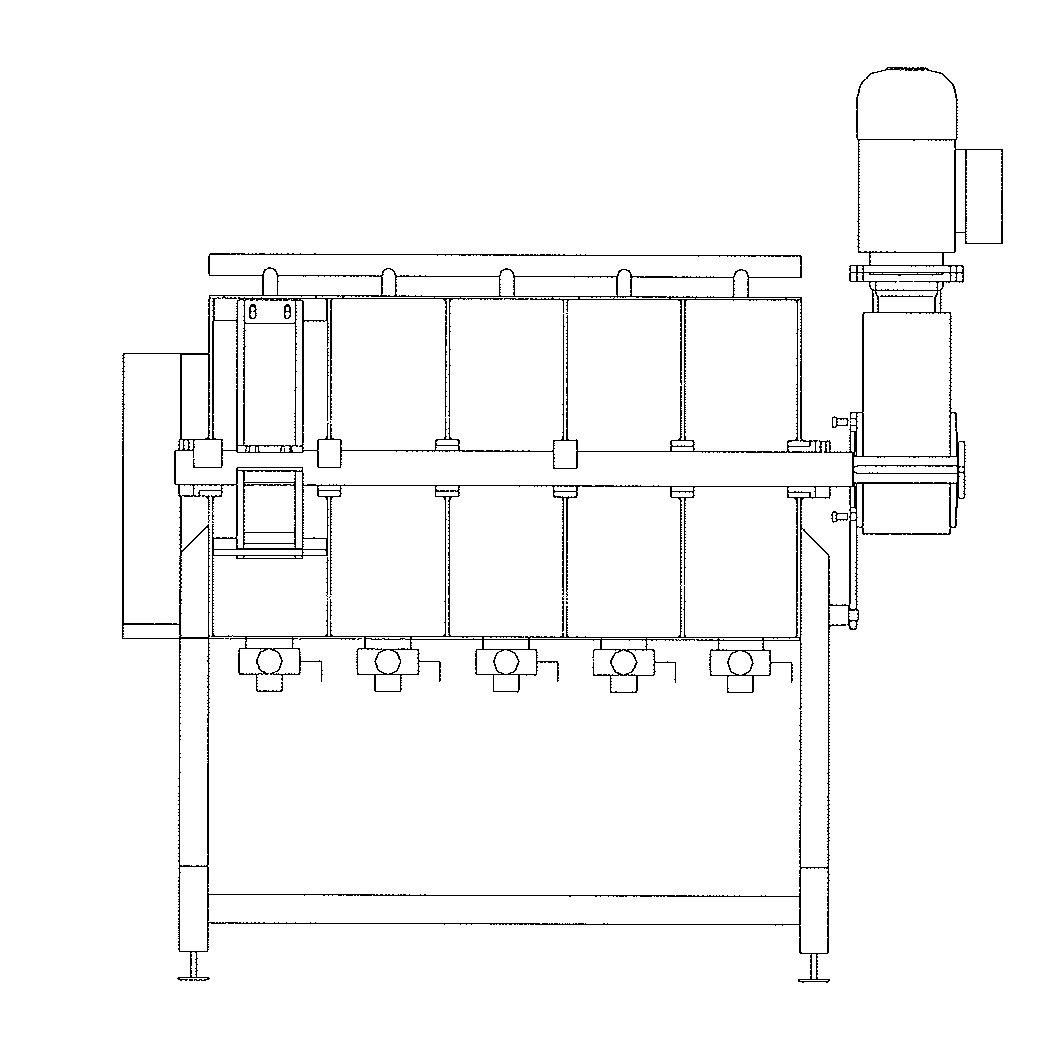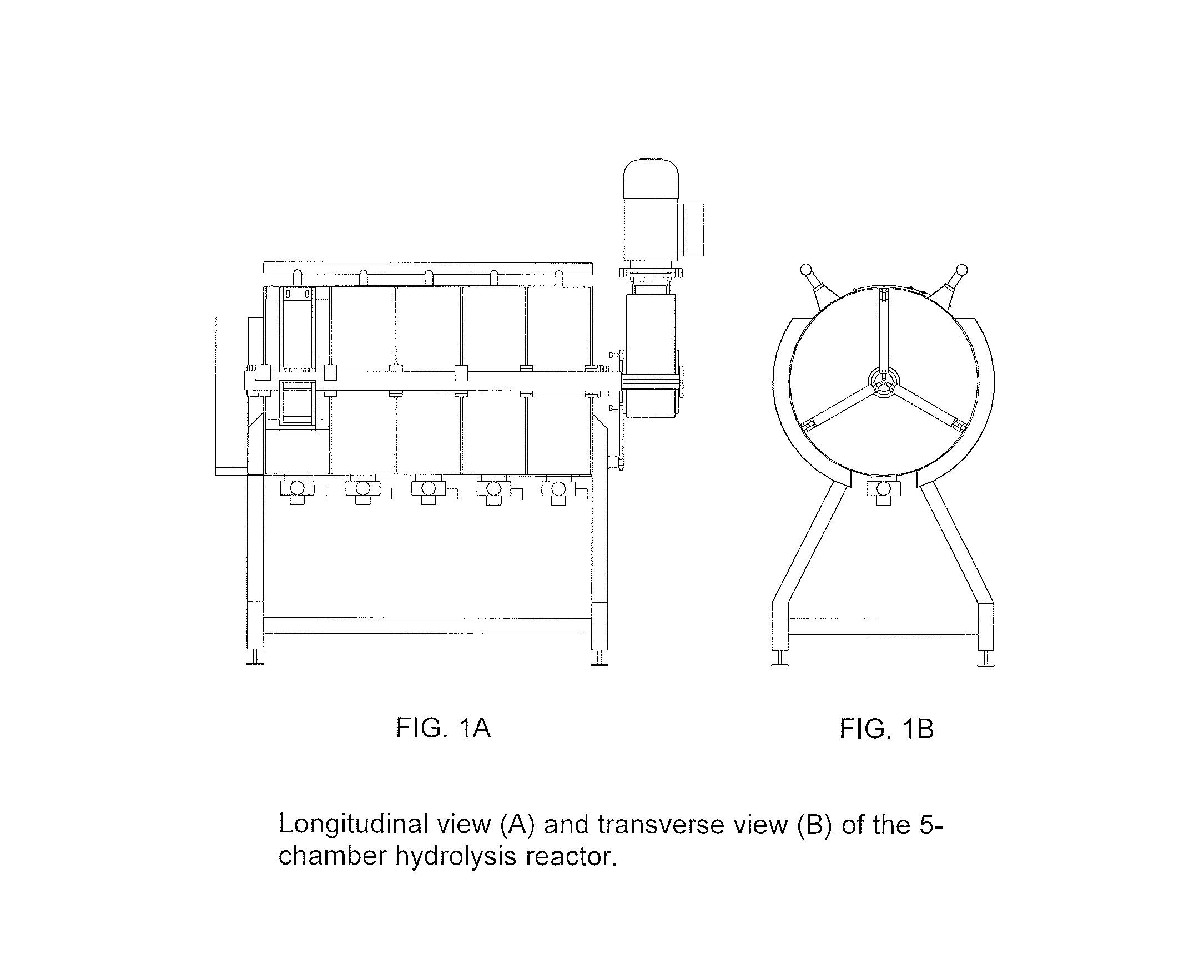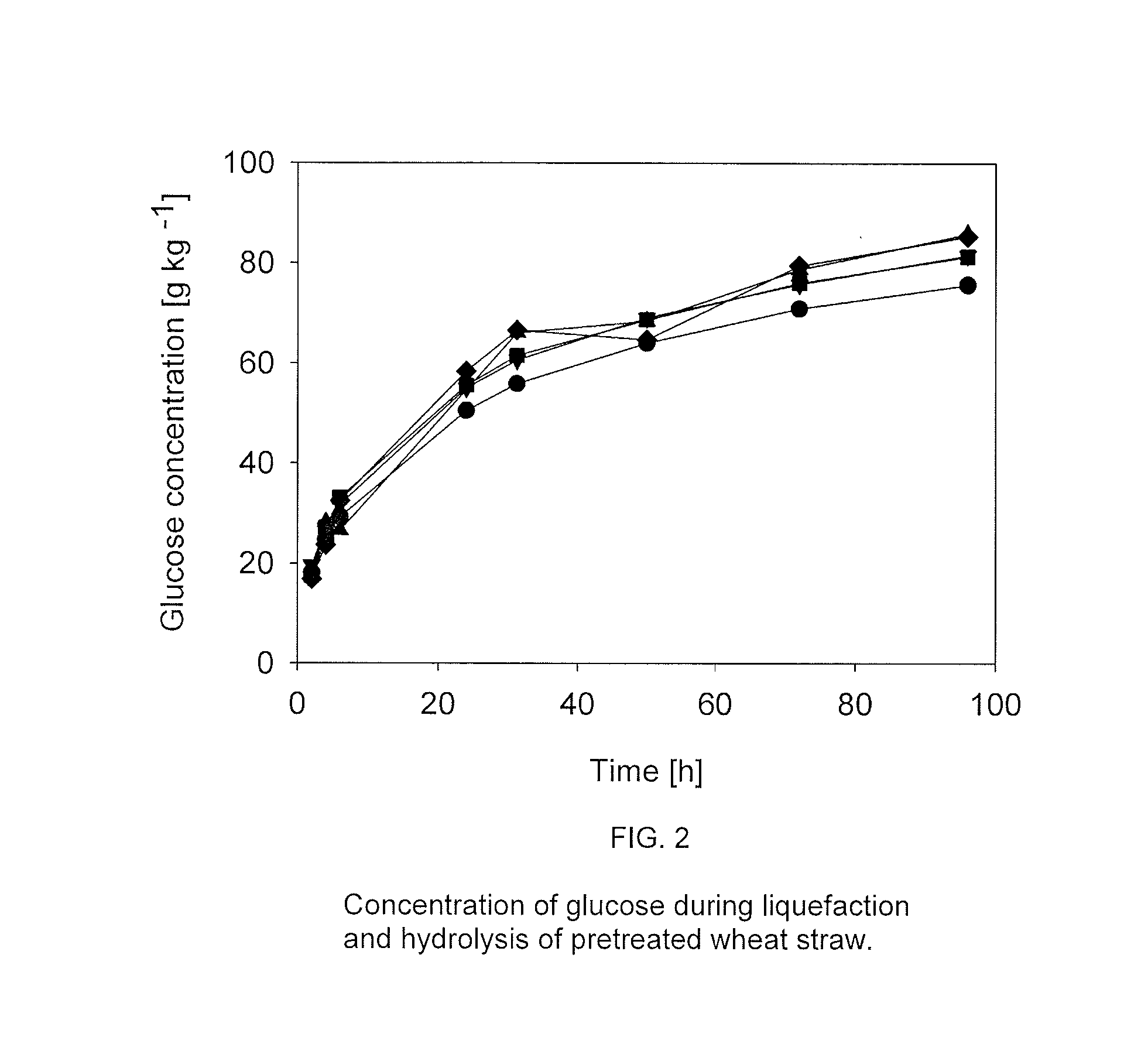Enzymatic hydrolysis of biomasses having a high dry matter (DM) content
a biomass and enzymatic technology, applied in the field of liquefaction and saccharification of biomasses, can solve the problems of weak inter- and intra-hydrogen bonding, hemicellulytic system complexity, and large amount of dm, and achieve the effect of ensuring the accessibility of cellulos
- Summary
- Abstract
- Description
- Claims
- Application Information
AI Technical Summary
Benefits of technology
Problems solved by technology
Method used
Image
Examples
example 1
Enzymatic Hydrolysis in Laboratory Scale
[0083]Pressed pre-treated wheat straw with an average size of approximately 40 mm (counter-current water extraction at 180-200° C. for 5-10 min., water and dry matter flow ratio of 5:1) corresponding to 25 g dry weight (=67.0 g pre-treated straw) was put into a plastic bag. 0.75 mL of Novozym 188, 3.75 mL of Celluclast 1.5 FG L and 11.9 mL of 50 mM sodium citrate buffer, pH 5.0, was mixed and sprayed onto the straw. This resulted in a final dry matter content of 30%. The enzyme loading corresponded to 10 Filter Paper Units (FPU) / g DM.
[0084]The mixer consisted of a drum (1.0 m long and 0.78 m in diameter) with 5 internal ribs along the long axis to ensure proper mixing of the material. The drum rotated along the horizontal axis with a speed of 26 rpm. The mixing / hydrolysis of the material was performed for 18-24 hours at room temperature. This resulted in a thick paste without any remaining large fibres. A control bag with the same enzyme loadi...
example 2
Enzymatic Hydrolysis at Pilot Scale
[0086]Pressed pre-treated wheat straw with an average size of approximately 40 mm (pre-treated by counter-current water extraction at 180-200° C. for 5-10 min. with a water and dry matter flow ratio of 5:1) corresponding to 7 kg DW (=20 kg pre-treated straw) was put into a conventional rotary cement mixer, with a horizontal axis tilted about 10 degrees. The mixer had 2 internal ribs along the long axis to ensure mixing of the material. A lid was mounted on the opening to avoid evaporation from the mixer. The mixer drum rotated along the horizontal axis with a speed of 29 rpm.
[0087]200-1150 mL of Celluclast 1.5 FG L and 40-225 mL of Novozym 188 were added to the straw. This resulted in a final dry matter content of 30%. The enzyme loading corresponded to 3-15 FPU / g DM. The pH was adjusted to 4.8 to 5.0 by addition of sodium carbonate.
[0088]The cement mixer was heated to 40-45° C. by use of a fan heater. The mixing / hydrolysis of the material was perf...
example 3
Liquefaction, Hydrolysis and Fermentation
[0091]The hydrolysis reactor was designed in order to perform experiments with liquefaction and hydrolysis solid concentrations above 20% DM shown in longitudinal view in FIG. 1A and in transverse view in FIG. 1B. The reactor consisted of a horizontally placed drum divided into 5 separate chambers each 20 cm wide and 60 cm in diameter. A horizontal rotating shaft mounted with three paddlers in each chamber was used for mixing / agitation. A 1.1 kW motor was used as drive and the rotational speed was adjustable within the range of 2.5 and 16.5 rpm. The direction of rotation was programmed to shift twice a minute between clock and anti-clock wise. A water-filled heating jacket on the outside enabled the control of the temperature up to 80° C.
[0092]The chambers were filled with pressed pretreated wheat straw with an average size of approximately 40 mm (pre-treated by counter-current water extraction at 180-200° C. for 5-10 min. with a water and dr...
PUM
| Property | Measurement | Unit |
|---|---|---|
| size | aaaaa | aaaaa |
| temperatures | aaaaa | aaaaa |
| size | aaaaa | aaaaa |
Abstract
Description
Claims
Application Information
 Login to View More
Login to View More - R&D
- Intellectual Property
- Life Sciences
- Materials
- Tech Scout
- Unparalleled Data Quality
- Higher Quality Content
- 60% Fewer Hallucinations
Browse by: Latest US Patents, China's latest patents, Technical Efficacy Thesaurus, Application Domain, Technology Topic, Popular Technical Reports.
© 2025 PatSnap. All rights reserved.Legal|Privacy policy|Modern Slavery Act Transparency Statement|Sitemap|About US| Contact US: help@patsnap.com



